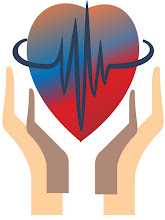 Prevention
Prevention
Protection from sun exposure is important all year round, not just during the summer or at the beach. Ultraviolet (UV) rays can reach you on cloudy and hazy days, as well as bright and sunny days. UV rays also reflect off of surfaces like water, cement, sand, and snow.The hours between 10 a.m. and 4 p.m. daylight savings time (9 a.m. to 3 p.m. standard time) are the most hazardous for UV exposure in the continental United States. UV rays are the greatest during the late spring and early summer in North America.
CDC recommends easy options for sun protection
- Use sunscreen with sun protective factor (SPF) 15 or higher, and both UVA and UVB protection.
- Wear clothing to protect exposed skin.
- Wear a hat with a wide brim to shade the face, head, ears, and neck.
- Wear sunglasses that wrap around and block as close to 100% of both UVA and UVB rays as possible.
- Seek shade, especially during midday hours.
Sunscreen
The sun's UV rays can damage your skin in as little as 15 minutes. Put on sunscreen before you go outside, even on slightly cloudy or cool days. Don't forget to put a thick layer on all parts of exposed skin. Get help for hard-to-reach places like your back.How sunscreen works. Most sun protection products work by absorbing, reflecting, or scattering sunlight. They contain chemicals that interact with the skin to protect it from UV rays. All products do not have the same ingredients; if your skin reacts badly to one product, try another one or call a doctor.
SPF. Sunscreens are assigned a sun protection factor (SPF) number that rates their effectiveness in blocking UV rays. Higher numbers indicate more protection. You should use a sunscreen with at least SPF 15.
Reapplication. Sunscreen wears off. Put it on again if you stay out in the sun for more than two hours, and after you swim or do things that make you sweat.
Expiration date. Check the sunscreen's expiration date. Sunscreen without an expiration date has a shelf life of no more than three years, but its shelf life is shorter if it has been exposed to high temperatures.
Cosmetics. Some make-up and lip balms contain some of the same chemicals used in sunscreens. If they do not have at least SPF 15, don't use them by themselves.
Clothing
Loose-fitting long-sleeved shirts and long pants made from tightly woven fabric offer the best protection from the sun's UV rays. A wet T-shirt offers much less UV protection than a dry one. Darker colors may offer more protection than lighter colors.If wearing this type of clothing isn't practical, at least try to wear a T-shirt or a beach cover-up. Keep in mind that a typical T-shirt has an SPF rating lower than 15, so use other types of protection as well.
Hats
For the most protection, wear a hat with a brim all the way around that shades your face, ears, and the back of your neck. A tightly woven fabric, such as canvas, works best to protect your skin from UV rays. Avoid straw hats with holes that let sunlight through. A darker hat may offer more UV protection.If you wear a baseball cap, you should also protect your ears and the back of your neck by wearing clothing that covers those areas, using sunscreen with at least SPF 15, or by staying in the shade.
Sunglasses
Sunglasses protect your eyes from UV rays and reduce the risk of cataracts. They also protect the tender skin around your eyes from sun exposure.Sunglasses that block both UVA and UVB rays offer the best protection. Most sunglasses sold in the United States, regardless of cost, meet this standard. Wrap-around sunglasses work best because they block UV rays from sneaking in from the side.
Shade
You can reduce your risk of skin damage and skin cancer by seeking shade under an umbrella, tree, or other shelter before you need relief from the sun. Your best bet to protect your skin is to use sunscreen or wear protective clothing when you're outside—even when you're in the shade.For more information: http://www.medicinenet.com/sun_protection_and_sunscreens/article.htm




No comments:
Post a Comment